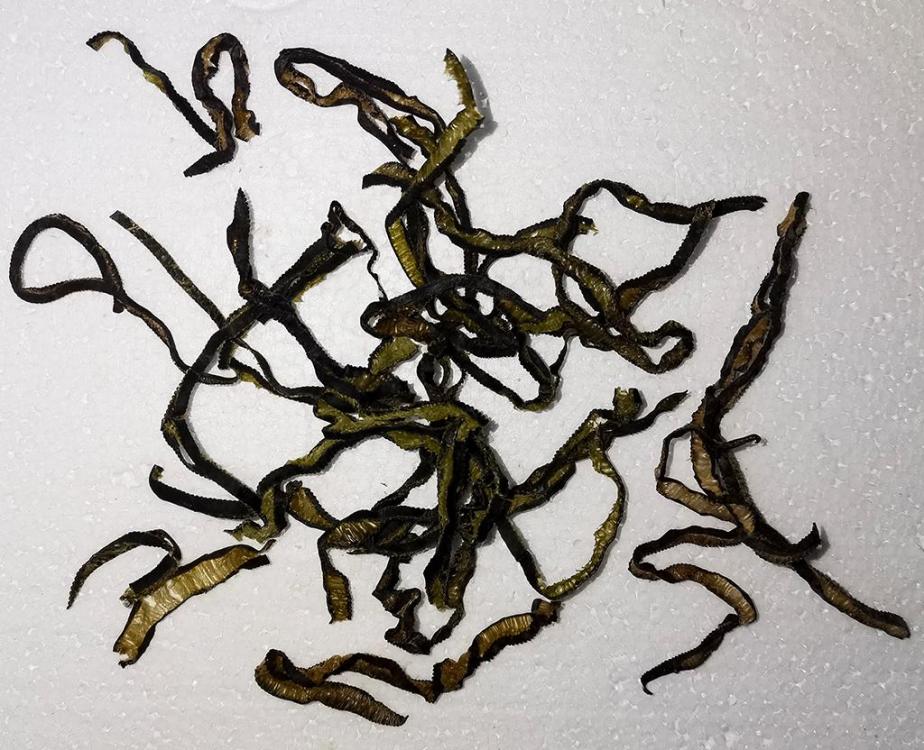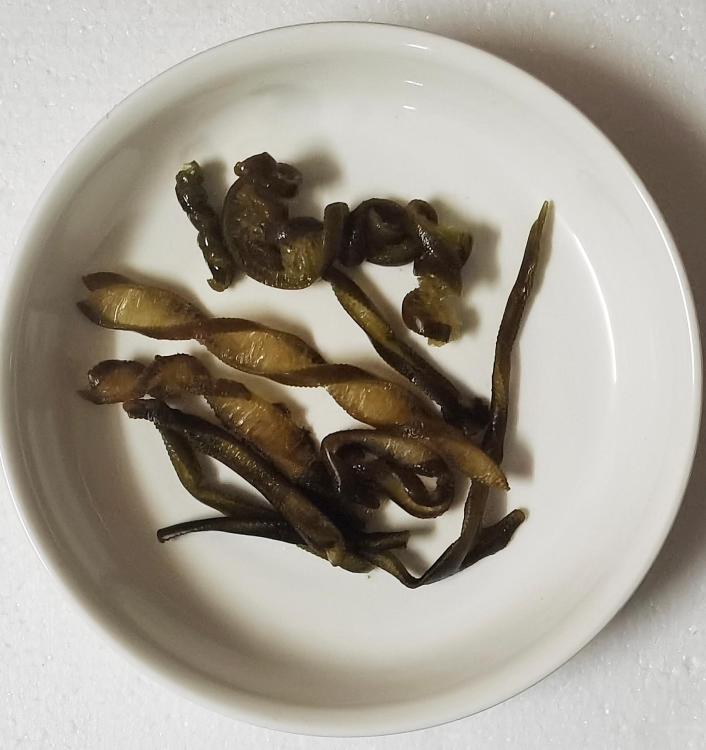The part of the world least understood by even scientists is the oceans. It is believed that only a small fraction of the life species down there have been studied, whether animal or vegetable. So information on many is limited. However, we do know that in the depths live the world’s most numerous lifeform, fungi, few of which have been identified and named.
Dried "Sea Matsutake"
This one however, despite a misleading name, is another type of algae, Codium fragile. In Chinese, it is 海松茸 (hǎi sōng róng), sometimes shortened to just 海茸 (hǎi róng). The full name literally translates to ‘sea pine antler’, but the last two characters 松茸 (sōng róng) are also the Chinese for the Japanese favourite, まつたけ (matsutake, which means ‘pine mushroom’). One being fungi and the other an alga, they are unrelated. So, it is often translated into English here as ‘sea matusake’ although I’ve also seen it as ‘dead man’s fingers’ and as ‘sea velvet’ as well as many more names. Wikipedia lists nine English names: green sea fingers, dead man's fingers, felty fingers, forked felt-alga, stag seaweed, sponge seaweed, green sponge, green fleece, and oyster thief. But I have a few more.
There is only a little information in English on the internet regarding this(search for the Latin name) and only a few passing mentions in Chinese. It is native to the waters around Japan and eastern China but has been introduced accidentally around the world including the Atlantic and the Mediterranean and is considered to be a troublesome invasive species. It destroys oyster beds etc, resulting in the name ‘oyster thief’. For more details on its invasiveness and spread, see here.
It is mostly sold dried and requires soaking for between two and three hours to rehydrate. Thereafter, it is cooked for no more than two minutes or they lose their flavour. It doesn’t like heat much. It can be eaten raw, but the locals don’t do raw, especially things they’ve never seen before.
Rehydrated "Sea Matsutake"
It tastes nothing like mushroom to me, but has a similar texture to some fungi species. Sort of firm and slightly chewy, although so do many varieties of seaweed.






